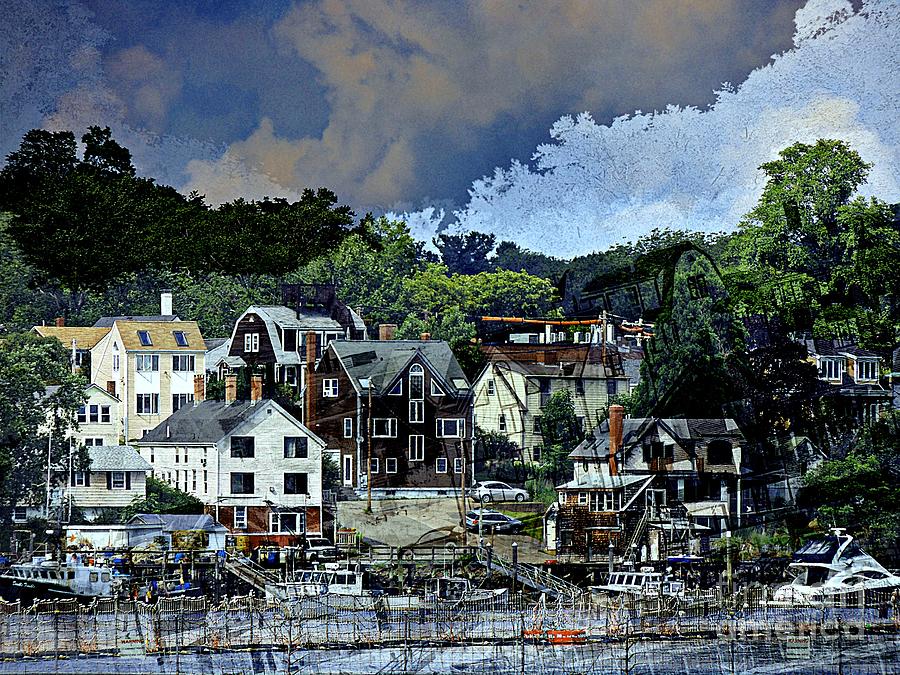
Badger Island

by Marcia Lee Jones
Title
Badger Island
Artist
Marcia Lee Jones
Medium
Photograph - Photography
Description
Shipbuilding center
William Badger House in 1912, Badger's Island
Prior to the Civil War, Badger's Island was famous for shipbuilding. Eastern white pine for masts, together with lumber for hulls, arrived down the Piscataqua River from inland forests. Only two tenths of a mile (322 m) from Portsmouth's busy wharves, the island's gradual slope into the deep channel between was ideal for launching vessels. First called Rising Castle Island, it changed to Langdon's Island when John Langdon established his shipyard. The first U. S. Navy ships commissioned by the Continental Congress were built here by master shipbuilder James Hackett,[2] including USS Ranger in 1777.[3] One of his apprentices working on Ranger was William Badger.[4] Acquiring 3 acres (12,000 m2) on the island in 1797, he would dominate its shipbuilding until his death in 1830, launching more than 100 ships,[4] including naval vessels, merchant vessels and privateers. The region produced many fine shipbuilders, including his nephew Samuel Badger, but William Badger, called Master Badger, is best known. He is buried on the island that bears his name.
In 1837, Frederick Fernald purchased Badger's shipyard. In 1844, he joined William Pettigrew to establish Fernald & Pettigrew, which would produce some 30 ships. Among their output was a series of clipper ships, including the Typhoon.[5] Launched in 1851, Typhoon set a sailing record to Liverpool, England -- 13 days, 10 hours dock to dock. Known as the "Portsmouth Flyer," it was the largest merchant ship yet seen in that port.[6] But Badger's Island would lose its importance as a shipbuilding center. The industry shifted downriver to Fernald's Island, home since 1800 to the Portsmouth Naval Shipyard.
Uploaded
November 2nd, 2013
Statistics
Viewed 1,400 Times - Last Visitor from Fairfield, CT on 04/20/2024 at 3:56 AM
Embed
Share
Sales Sheet



























































